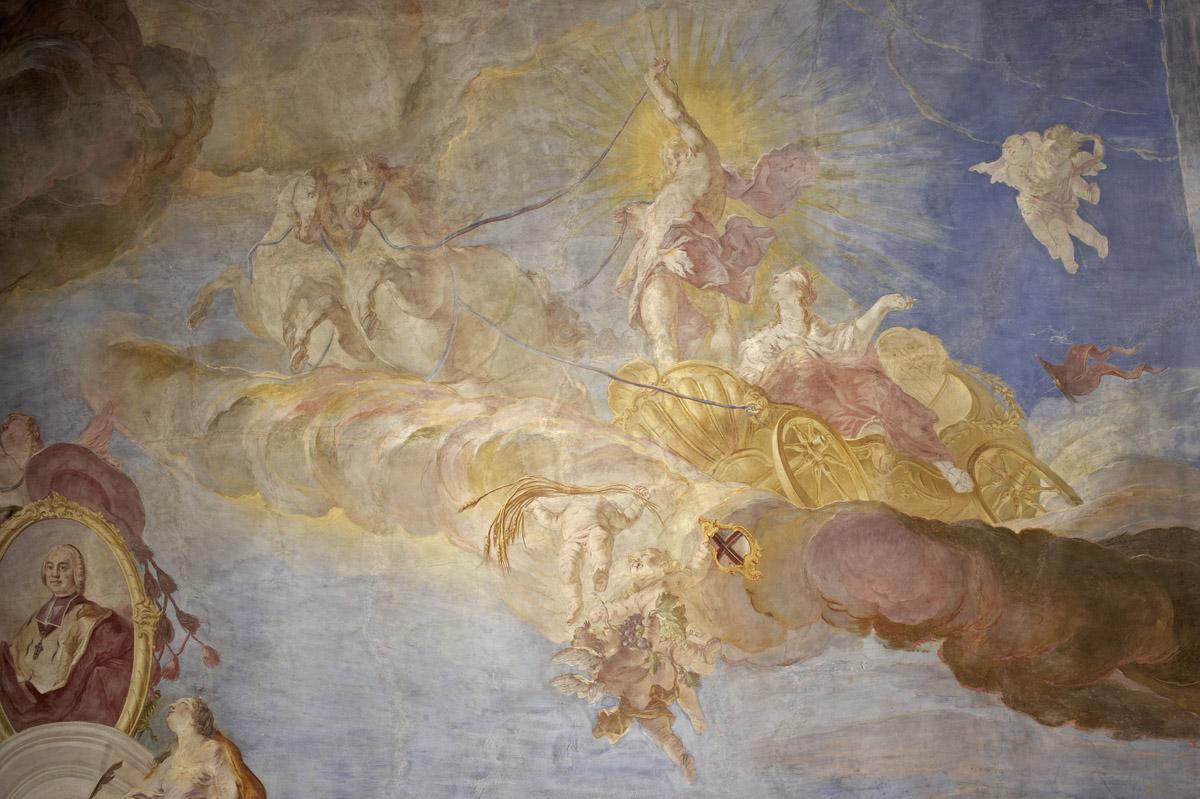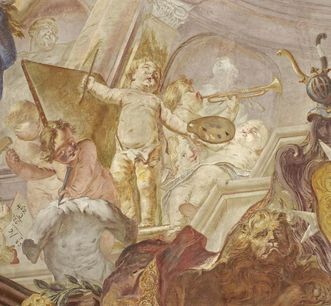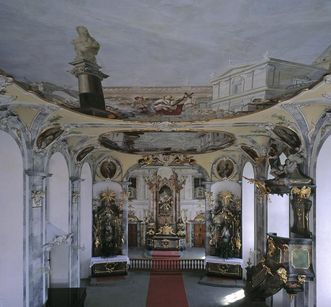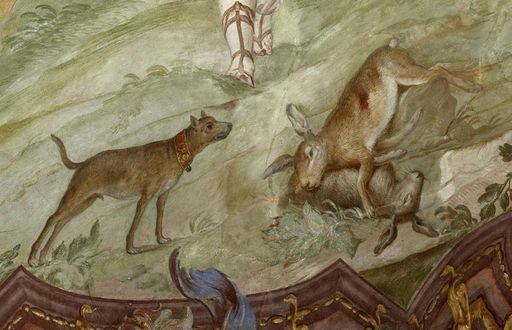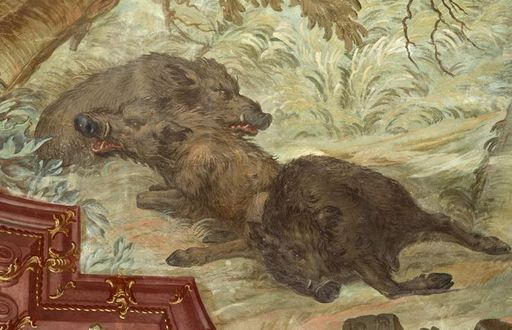Who was Giuseppe Ignazio Appiani?
Appiani was born in 1706, the son of stuccoist Pietro Francesco Appiani from Porto Ceresio and Maria Sophia from Fürstenfeld-Bruck in Munich. He worked exclusively in Germany and Switzerland, and was also known under the name Joseph Ignaz Appiani. Appiani did his most important work in Mainz, where he worked as court painter for the prince-elector of Mainz, becoming the director of the Electoral Academy for Painting and Sculpting in 1758. He died in 1785 in Triefenstein, Lower Franconia.



